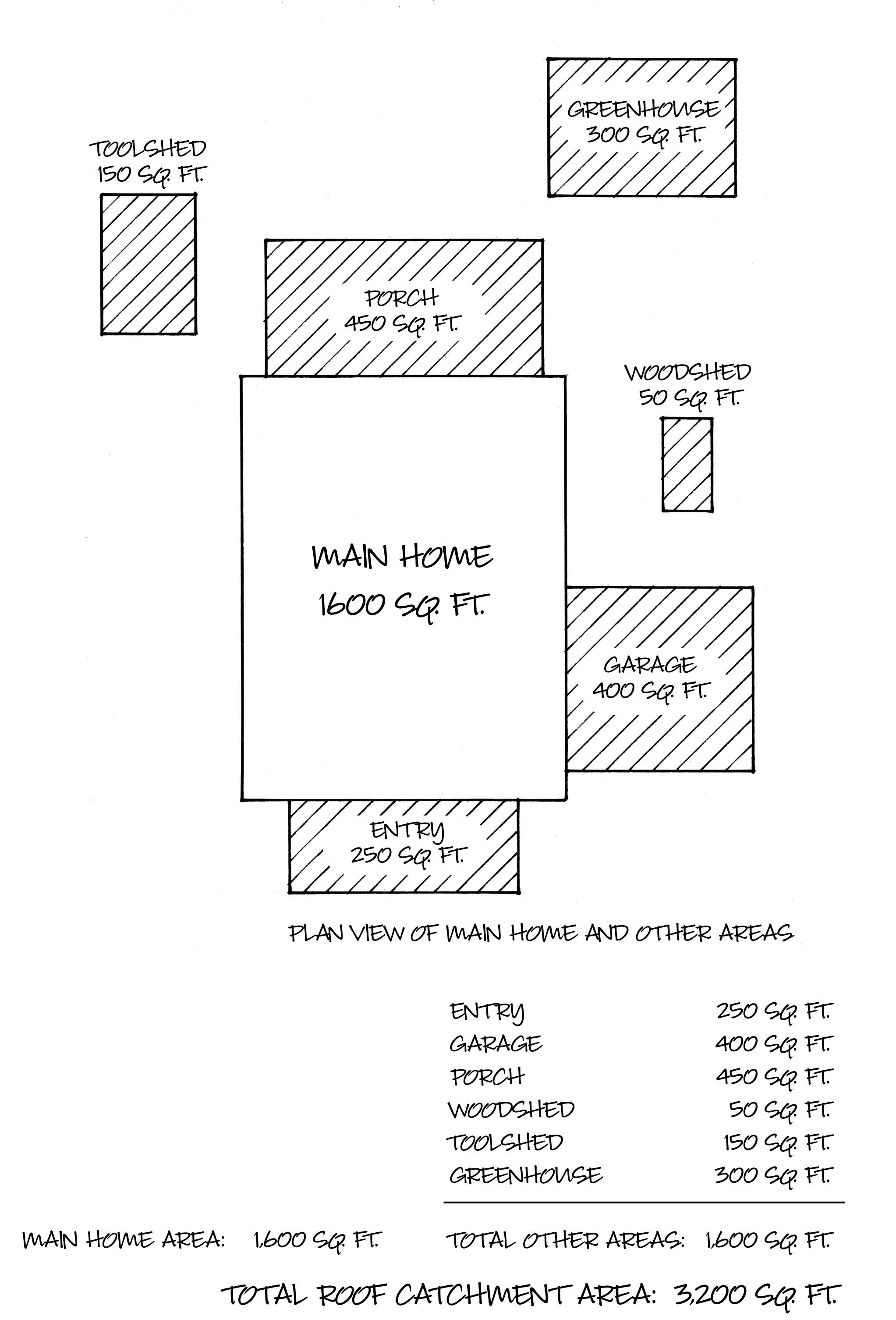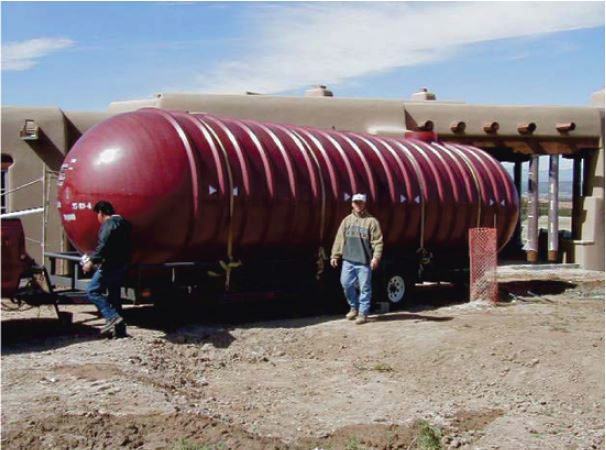The PermaDesign Weblog, with Nate Downey and Melissa McDonald!
Roof-Reliant Landscaping™ Step 11D: Sizing Your Cistern: Part IV – Consider Rainfall Patterns
Some landscape professionals have been known to say that the only cistern that is too large is the one you cannot afford. That’s because in New Mexico, we tend to get infrequent rainfall events. A typical “good” monsoon season consists of a handful of rainfall events that deliver quite a lot of rain (1/2 to 2 inches of rain) at a time. For example, it is not uncommon for areas in New Mexico to receive 1.5 inches of rain within a 24-hour period every two or three years. This would produce almost 1,700 gallons of water from a 1,800 square foot roof. If your water storage ank holds 2,000 gallons and you've already “banked” 500 gallons, then almost 200 gallons of water would overflow out of your cistern.
So, if the budget allows for a larger tank—and there is space on the property for a larger tank—consider applying the One-Half Rule (or even more) if you want to minimize the rainfall events that produce more water than your cistern can hold.
Precipitation can come at any time of year in New Mexico, and you can expect to distribute some portion of your rainwater harvest in between storm events. Therefore, it is unnecessary to have a cistern large enough to store an entire year's worth of precipitation.
For this reason, the recommended cistern size is approximately one-third of the amount that can be collected in a normal year. Therefore, the owners of the 1,800-square-foot roof in the Albuquerque example on the previous page should consider a cistern in the 2,000 to 3,000 gallon range.

If cost is a major factor, it may be wise to consider a storage tank on the smaller side of the containment spectrum. If finances allow, consider a tank on the larger side of the spectrum. Please note that the “One-Third Rule” is meant only as a helpful tool for getting you started. While developing your plans and designs, you can always modify this calculation depending on your needs, desires and finances.
The last step in sizing your cistern is simply to convert gallons into cubic feet so that you can get a sense of what size tank you will need. One way to determine the approximate dimensions of your storage tank is to ask potential cistern suppliers what size tanks are available in the number of gallons you require. Or, to manually calculate the volume of your tank, use this simple conversion equation:
1 cu. ft. water = 7.48 gallons of water
A 1,000-gallon cistern, then, equals 133.69 cubic feet of volume, which is about the size of a compact car. A 2,000-gallon cistern is approximately the size of a minivan, and the volume of 5,000-gallon tank is the equivalent of a large van or small school bus. A 10,000-gallon cistern can fit snugly on a large flatbed trailer.
Detailed information on different types of cisterns and on cistern-system components will appear in a future blog, Water Storage.
10/15/2015 | (0) Comments











Comments